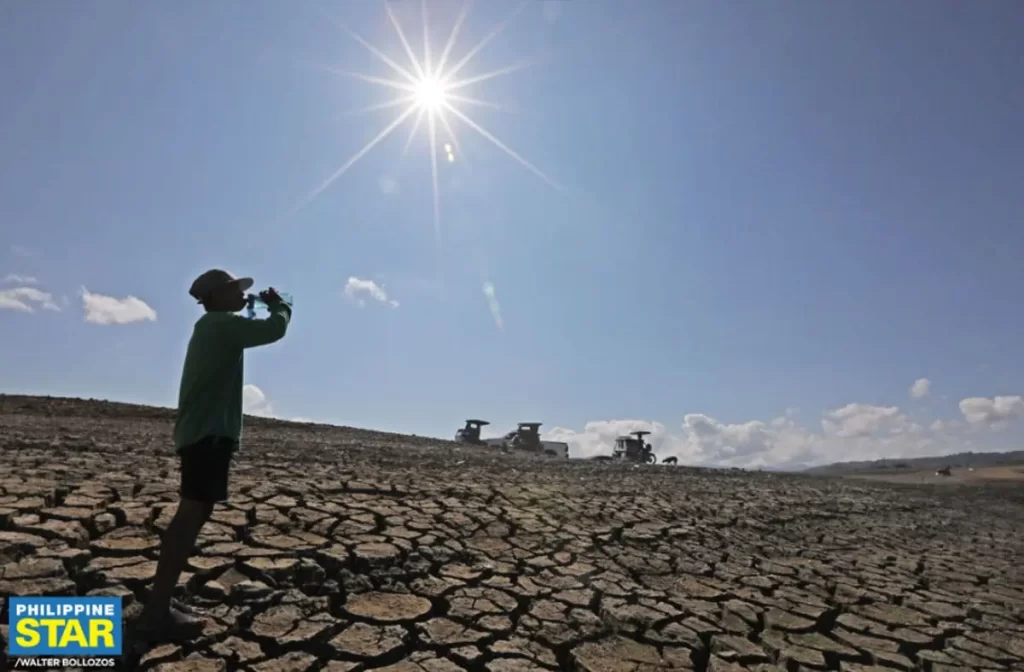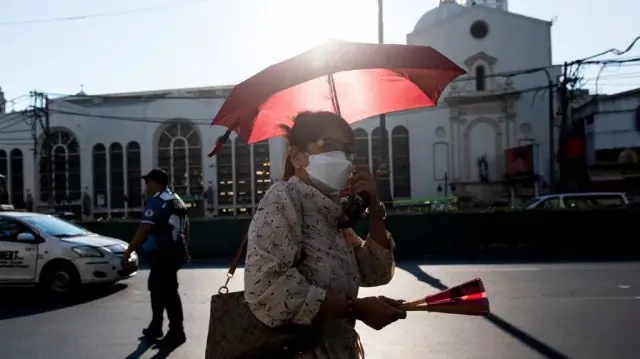Heat Wave | Extreme Heat experienced in the Philippines

Table of Contents
Key Takeaways
- Stay Hydrated: High temperatures increase the risk of dehydration, so it’s vital to drink plenty of water throughout the day.
- Limit Outdoor Activities: If possible, avoid strenuous outdoor activities during the hottest parts of the day to prevent heat-related illnesses.
- Wear Light Clothing: Choose lightweight, loose-fitting clothing that allows your body to breathe and helps to keep you cool.
- Seek Shade or Air Conditioning: When outdoors, try to stay in shaded areas, and if indoors, utilize air conditioning to maintain a comfortable temperature.
- Protect Yourself from the Sun: Use sunscreen to prevent sunburn and wear a wide-brimmed hat and sunglasses for additional protection.
- Check on Vulnerable Individuals: Keep an eye on children, elderly individuals, and those with chronic health conditions, as they may be more susceptible to heat-related illnesses.
- Know the Signs of Heat Exhaustion and Heatstroke: Familiarize yourself with the symptoms of heat-related illnesses, such as dizziness, nausea, headache, and rapid heartbeat, and seek medical attention if necessary.
- Stay Informed: Keep updated on weather forecasts and advisories to prepare for extreme heat events and take necessary precautions.
Introduction
A scorching heat wave has engulfed the Philippines, with temperatures skyrocketing and the warm index reaching an astonishing 45 degrees Celsius in some areas.
This unmatched weather condition sensation demands our interest and understanding as we navigate its effects. As the mercury climbs, it’s critical to comprehend the significant impacts of severe heat on health and wellness, economy, and culture.
The Philippines is presently in the throes of a severe warm front, with the heat wave warm index escalating to an astonishing 45 degrees Celsius. This unrelenting surge in temperature levels poses significant challenges for the country, from wellness concerns to agricultural impacts.
As the mercury climbs, the risk of heat-related health problems such as heatstroke and dehydration is amazingly high, particularly for prone populations such as the elderly and young children.
Beyond health and wellness ramifications, the scorching heat threatens agriculture, with plants shriveling under the ruthless sun and animals facing increased anxiety.
Recognizing the variables contributing to this heat wave is vital among these difficulties. Environment modification is essential, with rising temperatures intensifying extreme weather conditions, including heat waves.
Urbanization and land utilization modifications additionally compound the concern, with concrete jungles trapping warm and intensifying neighborhood temperature spikes.
As the country grapples with the immediate impacts of this heat wave, it also highlights the urgency of environmental action to alleviate future extremes and shield communities.
Effective adaptation and mitigation methods are crucial in reaction to this warm front. Public health initiatives focusing on warm front preparedness and awareness can help reduce heat-related health problems.
Lasting urban planning and green facilities growth offer lasting services to mitigate metropolitan warmth islands and trendy city atmospheres. Furthermore, promoting water preservation methods and sustaining farmers with drought-resistant crops can reinforce farming strength when faced with extreme warmth.
As the Philippines faces this formidable heat wave, joint initiatives throughout industries are essential to guarding public health, boosting climate strength, and constructing a more lasting future.
Understanding the Heatwave
Interpretation of a heatwave
A heatwave is a long-term duration of extremely hot weather, typically accompanied by high humidity, that surpasses the region’s regular weather problems.
Elements contributing to the existing heatwave in the Philippines
Several variables add to the intensity of the existing heat wave: climate change, urbanization, and geographical area.
Environment change aggravates extreme weather conditions, while urbanization enhances the city warmth island effect, capturing warmth in densely booming areas.
Comparison to historic heatwaves in the region
While the Philippines is no stranger to warm weather, the extent and duration of the present heat wave go beyond historical documents. It is a stark reminder of the evolving environmental patterns and the immediate demand for adaptation methods.
Heat Wave in the Philippines

Since late, the Philippines has been facing an intense heat wave, with temperatures skyrocketing to extraordinary levels across numerous areas.
According to the current report, multiple locations in the country have experienced scorching temperature levels, with the heat index reaching worrying highs, often going beyond 45 levels Celsius.
This extended duration of severe warm poses substantial health threats to the populace, particularly vulnerable groups such as seniors, youngsters, and outside workers.
Neighborhood authorities and health agencies have released advisories advising the general public to take preventative measures to avoid heat-related diseases.
These advisories include staying hydrated, preventing extended direct exposure to the sun, using light clothes, and seeking sanctuary in significant areas during the most popular parts of the day.
Furthermore, communities are motivated to check on vulnerable individuals, such as seniors and those with pre-existing wellness problems, to guarantee their wellness throughout this challenging time.
The warm front also challenges farming and the atmosphere, with records of crop damage and water scarcity in some areas.
Farmers face difficulties preserving their crops and livestock amid the scorching temperatures, highlighting the need for flexible actions and assistance from federal government agencies.
As the warm front continues, authorities closely monitor the circumstance and execute procedures to mitigate its influences.
This includes the provision of relief help, distribution of drinking water, and establishment of air conditioning centers in impacted locations.
In addition, there are calls for better recognition and action on environmental change, stressing the requirement for lasting practices to minimize greenhouse gas discharges and minimize the regularity and strength of extreme climate occasions like heat waves in the future.
Heat Index in the Philippines
In current news, the Philippines has been experiencing a substantial surge in the warmth index, with temperatures reaching extreme degrees nationwide.
The warm index gauges how warm it feels when family member moisture is factored in with the actual air temperature level. It has been soaring to alarming elevations, often exceeding 45 degrees Celsius in certain areas.
This prolonged period of intense heat positions significant health and wellness risks to the populace, particularly vulnerable groups such as seniors, children, and people with pre-existing health conditions.
Wellness authorities have released advisories urging individuals to take precautions to avoid heat-related health problems, consisting of remaining hydrated, avoiding extended direct exposure to the sun, and looking for sanctuary in excellent areas throughout the most popular times of the day.
The scorching temperatures also present challenges for agriculture and the setting, with reports of plant damage and water shortages in some regions.
Farmers struggle to shield their crops and animals amidst the scorching heat, highlighting the requirement for adaptive measures and assistance from federal government companies.
As the heat wave persists, authorities carefully monitor the circumstances and implement measures to minimize its influence. This includes the circulation of relief aid, arrangement of alcohol consumption water, and establishment of cooling centers in influenced areas.
Furthermore, there is a growing understanding of the importance of addressing environmental modification and embracing sustainable techniques to mitigate the regularity and extent of extreme climate events like heat waves in the future.
Impact on Health and wellness
Results of severe heat on the body
Extreme heat presents significant health risks, including warm fatigue, heatstroke, dehydration, and worsening clinical conditions. Long-term exposure to heat can cause body organ failure and even death if correct safety measures are not followed.
At-risk populations in jeopardy
At-risk populations, such as the elderly, youngsters, pregnant women, and people with pre-existing health conditions, are especially susceptible to the unfavorable effects of severe warmth. It’s important to prioritize their safety and health during heat waves.
Actions to alleviate health risks
To minimize health and wellness dangers during heat waves, staying hydrated, avoiding outdoor activities during optimal sunlight hours, seeking shade or cool rooms, and wearing light-colored, baggy clothes are essential.
Neighborhood outreach and recognition projects can help inform the general public about heat-related wellness dangers and safety nets.
Economic Impact
Effect on farming
The scorching temperatures of the heat wave can have devastating impacts on farming, leading to plant failure, reduced yields, and anxiety in livestock.
Farmers face enormous challenges in safeguarding their crops and ensuring food safety and security amidst severe weather conditions.
Disturbance to exterior sectors
Outside markets, such as buildings and tourist destinations, experience disturbances during heatwaves because of safety issues and decreased site visitor turnover.
Construction workers are at risk of heat-related illnesses, while visitor destinations may see a decrease in foot web traffic as visitors move to more relaxed environments.
Long-term economic ramifications
The long-lasting financial implications of heat waves prolong past immediate disruptions, influencing markets reliant on secure climate patterns.
Investments in climate strength and adjustment procedures are essential to mitigate future economic losses and develop an extra-resilient culture.
Finally, the existing heat wave gripping the Philippines underscores the immediate requirement for positive actions to resolve the obstacles presented by severe warmth.
By recognizing its ramifications on wellness, economy, and culture, we can build a more durable and lasting future when faced with climate adjustment. Remain awesome, stay secure, and remain informed during these warm times.
Environmental Consequences
Effect on environments:
The relentless heatwave has stimulated devastating wildfires across the Philippine island chain, engulfing vast swathes of priceless environments in fires. From thick forests to essential biodiversity hotspots, the infernos have left a route of devastation, jeopardizing many plant and pet types.
Losing the environment worsens the already precarious state of many threatened species, pressing them closer to the brink of termination. Furthermore, the carbon discharges these fires release add to climatic pollution, worsening the climate dilemma.
Effects on water resources
The scorching temperatures have set off severe drought conditions, putting tremendous pressure on the Philippines’ water sources. Rivers and storage tanks are drying up disconcertingly, leaving areas blistered and farming in jeopardy.
With water deficiency impending, farmers encounter diminishing yields, and livestock need help finding ample hydration. The water deficiency intimidates livelihoods and heightens the danger of problems over diminishing sources and worsening socio-economic tensions.
Climate adjustment ramifications:
The intensity and regularity of heat waves in the Philippines are symptomatic of more comprehensive environmental change fads. Increasing worldwide temperatures and unattended greenhouse gas discharges are driving these severe weather events to unprecedented levels.
The existing heat wave serves as a raw pointer of the urgent requirement for environmental activity on both a regional and global scale.
Failure to deal with the source of ecological adjustment will only exacerbate the frequency and intensity of severe heat occasions, amplifying their harmful impact on environments, water resources, and human health.
Government Action
Activities taken by the federal government to deal with the heatwave:
The Philippine government has executed various measures to reduce its influence and safeguard prone neighborhoods in response to the escalating heat wave.
These include disseminating heat wave advisories and conducting public awareness projects to educate residents about health risks.
Additionally, emergency reaction groups have been activated to assist those influenced by the heatwave, including the circulation of alleviation products and the establishment of cooling facilities in risky areas.
Assessment of the efficiency of government steps:
While the federal government’s efforts to address the heat wave are extensive, there are difficulties in effectively getting to all impacted neighborhoods, especially those in remote and marginalized areas.
Furthermore, there is a demand for more significant financial investment in long-lasting adaptation and resilience-building procedures to alleviate the influence of future heat waves.
Integrating environmental durability factors into urban planning, facilities growth, and natural resource management policies entails integrating environmental durability factors.
Suggestions for future readiness and action approaches:
To enhance preparedness for future heat waves, the government should prioritize advancing early warning systems and preparing heatwave backups tailored to the particular needs of various areas and at-risk populations.
Investing in eco-friendly facilities, such as metropolitan environment-friendly areas and heat-resistant structure layouts, can additionally assist in minimizing the impact of the metropolitan warm island and decrease heat-related health and wellness threats.
Moreover, enhancing partnerships with civil culture organizations, academia, and the economic sector is necessary to cultivate a collaborative and comprehensive technique for environmental adjustment and resilience-building efforts.
Neighborhood Strength

Value of neighborhood activity in reacting to severe warm:
Neighborhood durability is vital in reducing the influence of extreme warmth occasions and ensuring the well-being of prone populations.
By fostering social cohesion and solidarity, areas can set resources and support networks in motion to aid those in need.
Additionally, community-based adjustment initiatives, such as tree planting campaigns and heatwave preparedness workshops, empower regional homeowners to take proactive steps to secure themselves and their atmosphere from the effects of severe warmth.
Instances of area efforts to mitigate the Effect of the heatwave
Throughout the Philippines, communities are stepping up to face the challenges the heatwave poses via ingenious grassroots efforts.
From city gardening projects to water conservation initiatives, these initiatives demonstrate the power of cumulative activity in structure durability to environmental change.
For example, barangay-level task forces have been developed to coordinate heatwave feedback efforts and ensure the fair circulation of sources to susceptible homes.
Ways people can add to area durability:
People can play a critical function in boosting neighborhood resilience to severe warmth by taking on basic yet reliable procedures in their daily lives. These include remaining notified concerning heatwave dangers and preventative measures, staying moisturized, and preventing exterior tasks throughout peak warm hours.
Furthermore, sustaining regional initiatives that advertise environmental resilience, such as community gardens and reusing programs, can aid in constructing more vital and a lot more resistant neighborhoods in the face of environmental change.
Conclusion
As the mercury continues to increase and the impact of severe warming is significantly severe, the demand for collective action to address climate modification’s underlying motorists has never been more immediate.
To conclude, the astonishing warm front gripping the Philippines with a scorching heat wave and warmth index of 45 degrees Celsius requires immediate interest and concerted activity. This extreme weather event presents unavoidable public health, agricultural efficiency, and environmental security hazards.
Immediate actions to heat wave are necessary to safeguard the most susceptible members of the culture, including the elderly, children, and exterior workers, from heat-related illnesses and dehydration. Accessibility to air conditioning centers, adequate hydration, and public understanding projects are vital to a practical feedback approach.
Additionally, this warm front’s intensity emphasizes journalism’s need for lasting resilience-building initiatives and climate adjustment strategies.
Sustainable urban planning, investment in green infrastructure, and a decrease in greenhouse gas exhausts are necessary for reducing the regularity and intensity of such severe weather events in the future.
Joint campaigns, including those of government agencies, neighborhood neighborhoods, and worldwide companies, are vital to resolve the underlying root causes of environmental adjustment and improve the Philippines’ strength to warm front and other climate-related risks.
Despite heat waves this rising warm front, passivity would have alarming repercussions for public health, food security, and financial stability.
Therefore, it is incumbent upon policymakers, stakeholders, and individuals to prioritize environmental activity, execute adjustment measures, and foster durability in the Philippines and in the past.
With cumulative action and sustained dedication, we can adequately confront the challenges postured by severe heat and safeguard the wellness of existing and future generations.
By focusing on environmental sustainability, improving federal government preparedness and reaction devices, and cultivating community strength, we can reduce the influence of heat waves and develop a much more sustainable and durable future for all.
Let us note the call to action and collaborate to challenge the obstacles of extreme warmth with decision, development, and solidarity.
You May Also Like:
ADVERTISEMENT

Ciara Annie Duke is an American former professional poker player and author in cognitive-behavioral decision science and decision education. She is not just a brilliant business consultant and book author, but also a professional poker player and teacher. Annie is an author, speaker, and consultant in the decision-making space. Annie loves to dive deep into decision making under uncertainty. Her latest obsession is on the topic of quitting. In particular, she is on a mission to rehabilitate the term and get people to be proud of walking away from things.
Duke has created a true masterpiece that not only reveals the secrets of successful betting, but also teaches how to make decisions in the face of uncertainty. You’d be surprised, but it was she who led Ben Affleck to win a major tournament. Personal accomplishments include owning a WSOP bracelet and winning $4 million in prize money. This girl’s book is sure to change the way you think.
In addition to her writing, she offers a holistic approach that should be viewed in the big picture rather than individual stories. The book is a tremendous success among users and receives the highest feedback. By the way, The New York Times described her book as an example of a modern investment scheme. The book does not focus on specific solutions to certain situations, but teaches how to find solutions and analyze possible outcomes.